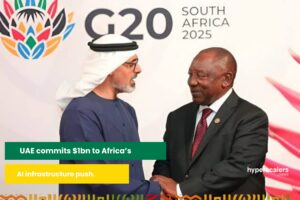In an official statement, MTN Group, a leading mobile telecommunications provider, reveals its current exploration of low earth orbit (LEO) satellite solutions in collaboration with industry operators like SpaceX’s Starlink and Eutelsat OneWeb. The primary objective of this initiative is to overcome connectivity challenges in remote regions and bolster network resilience in areas where traditional cellular infrastructure faces obstacles.
Recognizing the impediments to widespread broadband access in the telecommunications industry, MTN acknowledges issues such as coverage gaps, expensive devices, unaffordable data, and limited digital literacy. Encouragingly, recent progress, as noted by GSMA’s findings, indicates a substantial decrease in the coverage gap in sub-Saharan Africa from 50% in 2014 to 17% in 2022.
“To complement our terrestrial network – where the terrain can be difficult for radio sites and backhaul transport and sparse population distribution often makes regular cellular rollout uneconomical – we are now exploring the skies. Specifically, we are partnering for low earth orbit (LEO) satellite connectivity to connect the unconnected, extend mobile connectivity to more rural and remote areas and improve resilience”, states the company’s official statement.
To address the remaining 17% coverage gap, MTN Group is gearing up to “explore the skies” to swiftly connect those lacking access, particularly in remote and underserved areas. This initiative aligns with their Ambition 2025 strategic intent of “leading digital solutions for Africa’s progress.” The goal is to achieve 95% broadband population coverage across their footprint by 2025, a significant increase from 88% in 2022, while aiming for universal access in the long term.
Mazen Mroué, MTN Group’s Chief Technology and Information Officer, highlights the advantages of LEO satellites, emphasizing their shorter orbital periods and the significant reduction in the cost of launching payload into space, making them an attractive option.
To implement the plan, MTN outlines two LEO-based solutions. The first solution employs device-agnostic direct-to-cellular technology for underserved regions, ensuring compatibility with existing mobile units without modifications. The second solution utilizes LEO satellites to provide critical fixed connectivity for enterprise customers and efficient backhaul connectivity for MTN cellular sites, particularly in remote and rural locations.
MTN emphasizes its ongoing initiatives and partnerships with Lynk Global, AST SpaceMobile, SpaceX’s Starlink, and Eutelsat OneWeb, aiming to leverage satellite technology for broader connectivity. Trials and discussions with various partners are set to achieve significant milestones, including direct-to-cell trials in South Africa and Ghana, similar trials in Nigeria and South Sudan, and satellite broadband pilot plans in South Africa.

The announcement also outlines the financing model, with a standard revenue-sharing arrangement, where MTN serves as the customer, utilizing satellite infrastructure owned by the LEO satellite vendor. Prior to this announcement, successful trials, including a demonstration in Gowehn, Liberia, showcased direct mobile connectivity through satellite base stations. Additionally, the collaboration with Omnispace aims to broaden wireless services by exploring S-band satellite services and capitalizing on existing mobile networks for consumer mobile and enterprise IoT services.
MTN is joining the increasing trend of collaborations between terrestrial and satellite providers, evidenced by recent partnerships such as T-Mobile with SpaceX and Orange with Eutelsat. This reflects a broader movement in the telecom industry towards satellite collaborations. As satellite technology advances and becomes more cost-effective, we anticipate a surge in such partnerships, contributing to enhanced connectivity and narrowing the global digital divide in the years ahead.





